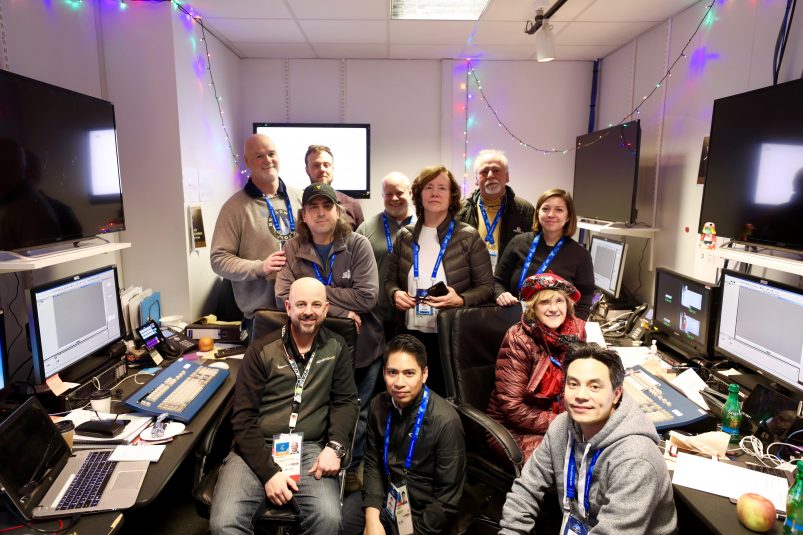Live From PyeongChang: Philip Paully, NBC Olympics Graphics Team Span the Globe
A prebuilt graphics center is producing more content in less time than in Rio
Philip Paully, director, graphics engineering and operations, and the NBC Olympics graphics team of more than 30 people onsite in PyeongChang are once again working to meet the needs of a production team that is creating more content than ever and doing so with an approach that is different from previous efforts.

The NBC Olympics graphics team in PyeongChang is taking advantage of faster rendering to meet the needs of the production team.
“The graphics center was prebuilt in Stamford, CT, before it was shipped,” says Paully, “and it’s been one of the best things that Terry Adams[, VP, IBC engineering, NBC Olympics,] and Dave Mazza[, SVP/CTO, NBC Sports Group and NBC Olympics,] did, because it meant we needed only two days to get the graphics department up and running. Our biggest job is to make sure everyone in production has what they need, and it is getting better as time goes by.”
The pre-assembly of graphics gear like the ChyronHego Mosaic, Duos, and Prime Clips and Mac computers allowed the graphics team to hit its stride more quickly and also arrive onsite two weeks later than usual.
“The Sony engineering team had everything plugged in and wired,” Paully explains. “We just had to fine-tune, get some software up and running, and scan every machine to make sure they were virus-free.”
Graphic-operations managers in both PyeongChang and Stamford are managing content creation and distribution in both facilities via a large Isilon server that handles all the data. FileCatalyst is used to provide high-speed transfers among the IBC, Stamford, and the venues. They also feed the graphics to playout devices like EVS and Mira servers.
The onsite graphics team also includes a Control Room A team with two ChyronHego Mosaic units, one for regular CG operation and one for still-store needs, and two ChyronHego Prime Clip players, one in HD and one in 4K mode for playback on studio monitors.
A graphics room for the Control Room X production facility is also running and handling graphics via ChyronHego Mosaic for ski jumping and Closing Ceremony. It also has a backup Prime Clip Player for Control Room A.
“Then we have one room with three art directors and one room with five Mac stations, all creating and rendering graphics,” says Paully, noting, “The team is about 80% the same as it as in Rio. It’s a well-organized group of the most talented people I have met, and they are the best at working under pressure that I have ever seen.”
The challenge for the team, he adds, is managing the human equation and making sure everyone is getting out the right content at the right time to the right place: “You can have fast equipment and the best artist in the world, but management is the most crucial part.”
One of the big improvements from the 2012 Rio Olympics is the doubling of the number of processors, from 80 to 160, used to render graphics. Alienware R2 Alpha Series computers allow rendering of 4K elements (important for use on the studio 4K and 8K monitors) to be cut from an hour or more to mere minutes, handy when last-minute changes or demands occur.
“In Rio, we could render one or two graphics in an hour,” adds Paully. “Now we can render four or five in an hour, and these are large 4K moving files. Yesterday, we had to replace something in a 4K clip, and it took 6 minutes to render.”
Also important is the use of ChyronHego’s Hub Drive, software that allows 25 Chyron graphics machines to be tied to a server and to share content with each other.
For more of our coverage from the PyeongChang Winter Olympic Games, including interviews, videos, podcasts, and more, visit our SportsTech Live Blog.
